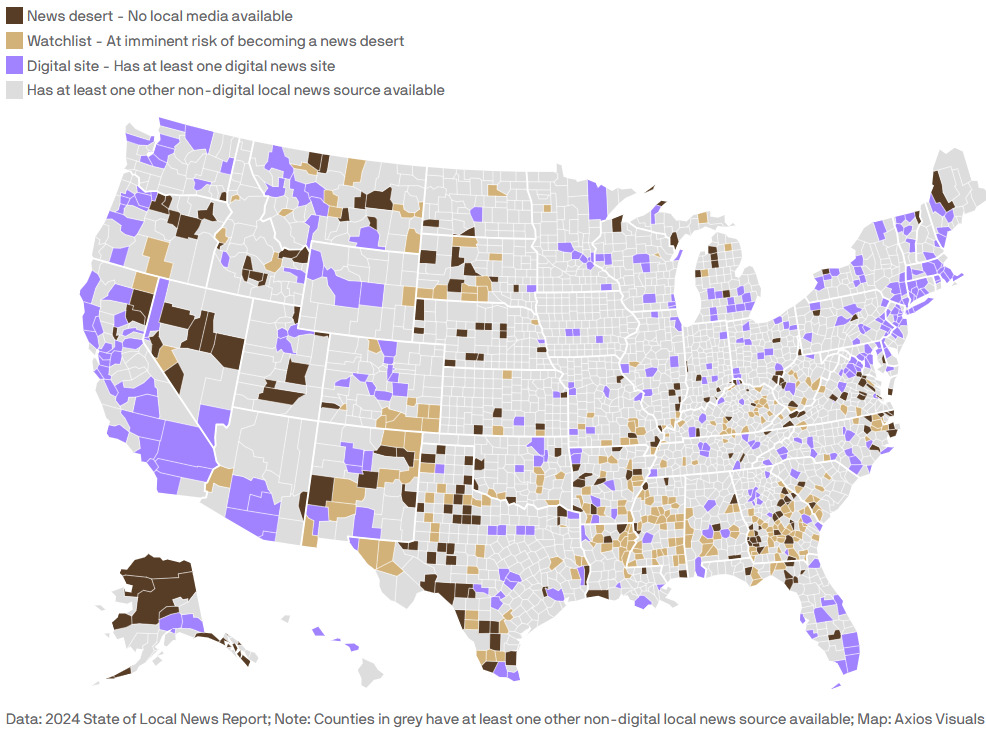
Time to end secret data laboratories—starting with the CDC
The American people are waking up to the fact that too many public health leaders have not always been straight with them. Despite housing treasure…
Thought Leader: Marty Makary

This piece is by WWSG exclusive thought leader, Sara Fischer.
An uptick in newspaper closures this year has left more than half of the nation’s 3,143 counties — or 55 million people — with just one or no local news sources where they live.
Why it matters: The rapid rise of digital local news sites isn’t enough to offset the dramatic rate of newspaper closures.
By the numbers: The U.S. saw 127 newspapers close in the last year at a rate of roughly two and a half per week, according to a new report from Northwestern’s Medill School of Journalism.
Zoom in: The number of local “news deserts,” or counties without a single source of local news, rose to 208 this year from 204 in 2023.
Between the lines: News deserts tend to be poorer, older, and less educated.
Zoom out: A significant increase in philanthropic funding for local news over the last year has given rise to more digital local news sites than ever, offering researchers a glimmer of hope for the future.
Reality check: Most counties that lose a newspaper are unlikely to see a replacement, even though there are more new digital local news sites than ever.
What to watch: A significant number of newspapers (258) changed hands over the past year, compared to 2023 (180).
Time to end secret data laboratories—starting with the CDC
The American people are waking up to the fact that too many public health leaders have not always been straight with them. Despite housing treasure…
Thought Leader: Marty Makary
David Frum: How Harris Roped a Dope
This piece is by WWSG exclusive thought leader, David Frum. Vice President Kamala Harris walked onto the ABC News debate stage with a mission: trigger…
Thought Leader: David Frum
Michael Baker: Ukraine’s Faltering Front, Polish Sabotage Foiled, & Trump vs. Kamala
In this episode of The President’s Daily Brief with Mike Baker: We examine Russia’s ongoing push in eastern Ukraine. While Ukrainian forces continue their offensive…
Thought Leader: Mike Baker

